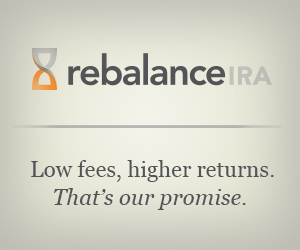Excessive Leverage Caused 1929 Stock Market Crash and 2008 Economic Collapse
[ad_1]
Even though many years separate these two painful events the common denominator of what caused both, is the same.
Back in the 1920’s you could put one dollar down and buy ten dollars worth of stock. This kind of leverage is fine when the stock market goes higher causing a wind up in stock prices and also high confidence in investors who felt they couldn’t lose.
As stocks moved higher and higher it seemed as though they were correct.
But when the market stopped going higher stockbrokers started calling their clients to let them know they had to put up more money. Some could sell stocks to cover their accounts but when every brokerage firm got a hold of all their clients with the same message it was like yelling fire in a packed theater. With all these people trying to sell all at once the crash in prices was very fast and severe.
Not only did the stock market crash, people were also fearful about their money in banks and when droves went to withdraw their money the run on the banks caused further economic pain.
Now fast forward around 80 years and substitute the over leverage in stocks with over leveraged banks and many people speculating in the housing market. Also with interest rates at historically low levels collectively these issues conspired to drive house prices up to foolish levels.
In the years prior to 2008 people had been conditioned to believe you couldn’t lose money on real estate. Not only did the average person believe this but it looks like banks believed this as well.
More and more people started to get into the housing market and borrow more money to buy a larger home, some also bought an investment property and some built up a portfolio of investment houses.
Well it’s readily apparent these weren’t investments at all, much more like wagers at the casino, big wagers in fact.
New players in the mortgage business also played an integral role in the run-up in housing prices as it allowed more than just banks to offer mortgages. This added competition started to impact banks earnings and so they tried to figure out other ways to make money.
Some came up with not so brilliant schemes that allowed them to take their money and leverage it up so they could try to make more money.
Unlike in the past when investors were allowed to put 10% down to buy stocks in the 1920’s these bankers only had to put down a few percent.
Why bankers were allowed to get so over leveraged is an important question to ask but what is much more important is preventing them from doing it again.
The combination of bankers leveraging their balance sheets up and consumers doing the same with their personal balance sheets are key reasons for the 2008 economic collapse. Historically low interest rates were also a culprit in the issue so the Federal Reserve policy makers should get some of the credit as well.
Just like the stock market of the 1920’s when stocks kept going higher it wasn’t a problem until they got up to ridiculous prices and the same thing happened to housing prices in the years leading up to 2008. The wind up was joyful as it looked like you couldn’t lose but the following unwind was quick and very painful.
After the big stock market crash of 1929 the government stepped in and tried to change many rules and regulations and started many agencies put in place to try and prevent a repeat in the future.
Some would rightly debate the effectiveness of all these actions but one of the most important was restrictions on leverage. No longer could you put down ten cents to buy a dollars worth of stock and this is a very good thing.
Now politicians and leaders of government institutions are coming up with plans to try and prevent a repeat of 2008. One problem with their efforts is they seem to be throwing out all kinds of ideas that sometimes cause people to lose sight of the biggest problem which is the leveraging up of bankers and consumers that drove housing prices to ridiculous levels. This is the key issue that caused the recent economic collapse that brought back fears of another great depression.
Signs are showing up that suggest we likely averted another depression with the economy well into the bottoming phase and it looks like following that there will be a recovery that leads to a significant economic expansion.
But it wouldn’t be wise to ignore what just happened because it looks like we are headed in a more positive direction. Instead we should stay focused on the fundamental reasons that caused the problems and work on ways to try to prevent them from happening again.
Rules and regulations that prevent bankers and consumers from getting leveraged way over their heads that could take them down as well as almost drown the entire global economy should be the focus of the changes.
Leverage caused the 1929 stock market crash just like it caused the 2008 economic collapse and reducing this risk is the most important problem to fix.
Banks and consumers have been starting to deleverage without any changes to the rules and regulations but even though they are systemic changes are still needed.
There is nothing wrong with leverage until it gets to extreme levels and that applies to banks as well as individuals. New rules and regulations should be very strict to prevent excessive leverage.
Some will say this gets the government too involved with bankers and consumers business. That’s too bad. Excessive leverage is way too important and dangerous to politicize and it’s critical to try and prevent as nobody wants a repeat of the 1929 stock market crash or the 2008 economic collapse.
These two events were way too painful, not to learn from, and the most important lesson they taught us is the ramifications of excessive leverage.
It isn’t possible to totally remove chances of economic calamity in the future but making it more difficult is worth doing. Excessive leverage is the key reason these painful events happened and also the key to reducing the risk of them happening again.
[ad_2]
Source by Allan Barry Laboucan




